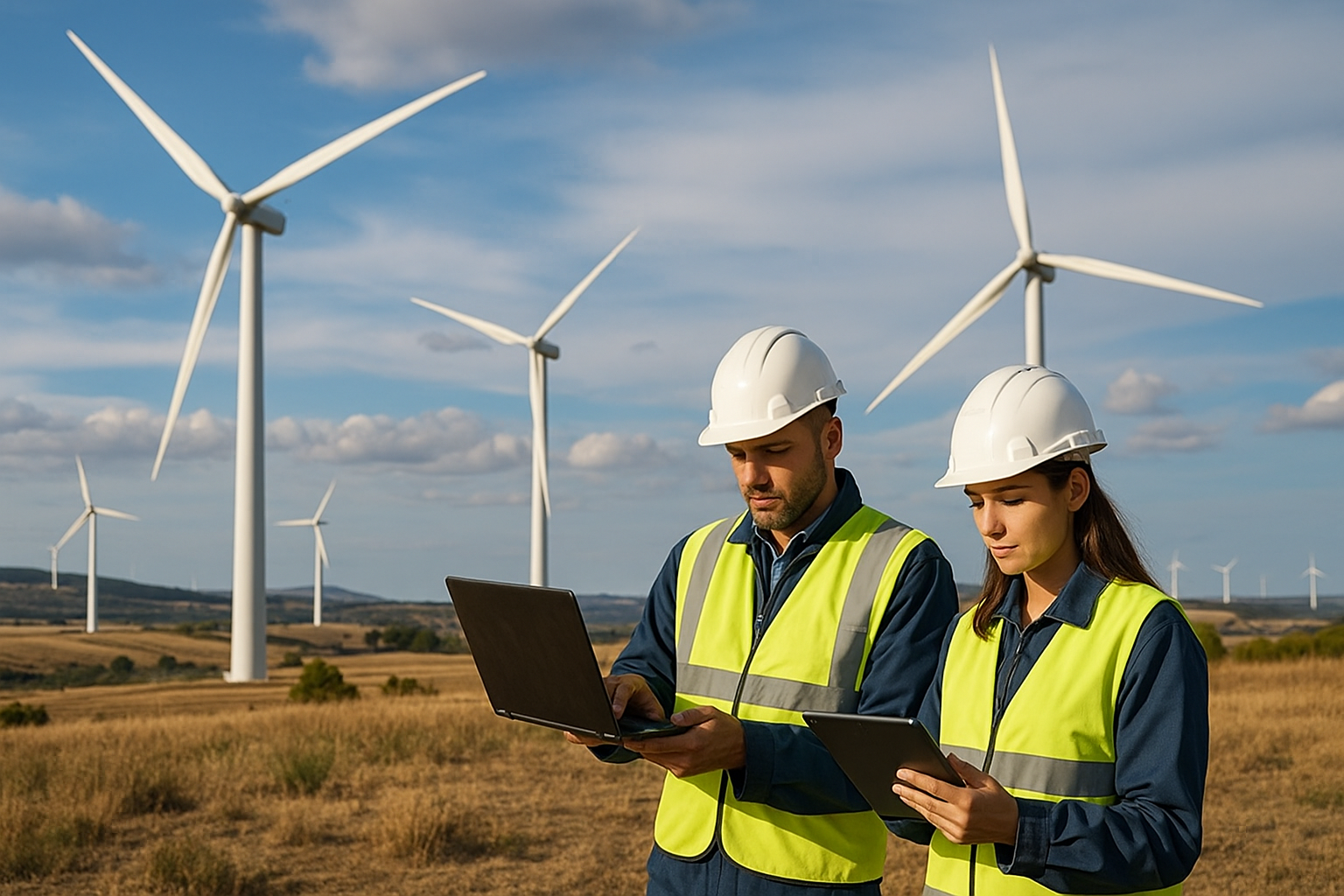Wind Asset Performance: How to Achieve Operational Excellence with Artificial Intelligence

If you're a manager or coordinator of O&M in renewable energy, this article is for you. Here, you'll understand how technology is transforming wind asset performance—from precise KPI measurement to anticipating failures with AI.
This topic matters because energy losses, silent failures, and reactive maintenance are still daily challenges in many wind farms. The good news is: with the right indicators and proper tools, it's possible to change this scenario and push your assets to peak performance.
What Is Wind Asset Performance?
Wind asset performance refers to a wind farm's ability to generate energy efficiently, safely, and predictably, converting wind into power with minimal losses.
To track this, it's essential to monitor key indicators such as:
- Operational availability: the percentage of time a turbine is able to operate.
- Capacity factor: the ratio between actual energy produced and the maximum possible output.
- Production efficiency: compares actual generation to expected output given the wind conditions.
These KPIs form the foundation to assess whether an asset is delivering its full potential.
Why Does Performance Monitoring Matter?
- Avoid unexpected losses: undetected failures lead to cumulative losses. Studies report over 11.3 TWh/year lost due to inefficiencies in wind farms across the US and Europe.
- Optimize maintenance costs: early detection prevents costly interventions.
- Ensure data-driven decisions: with KPI visibility, you're no longer relying on guesswork.
How Predictive Maintenance with AI Works
Unlike reactive or scheduled maintenance, predictive maintenance is condition-based. It uses sensors, SCADA data, and algorithms to forecast failures before they happen.
Examples of application:
- Early detection of abnormal vibrations
- Identifying underperformance after maintenance (e.g., pitch system issues)
- Alerts with estimated time-to-failure
These tools enable teams to act before breakdowns occur—buying the right part, mobilizing cranes at the ideal time, and avoiding unplanned downtime.
When and How to Use It
- After corrective or scheduled maintenance: validate asset performance recovery
- In farms with recurring failures: use historical data to address root causes
- To optimize planned outages: group maintenance tasks and reduce energy losses
Integrating predictive maintenance into daily operations requires a unified dashboard, a data-driven culture, and a trained O&M team.
Competitive Advantages of Using AI and Data
- Up to 30% reduction in O&M costs
- Predict issues up to 18 months in advance
- Avoid up to 500 MWh/month in losses per turbine
- Recover lost generation with fine-tuning (e.g., pitch or converter adjustments)
Real-World Examples and Proof
The Delfos platform predicted a main bearing failure in a 2.1 MW turbine, allowing it to operate safely for another 299 days and deliver 7,778 MWh that would have been lost. The alert came over 9 months in advance, and the repair was done on schedule—no emergency stoppage. Read the full case study.
According to the BloombergNEF Energy Transition Investment Trends 2021, wind farms with advanced digital maturity can achieve up to 10% more annual generation. This reflects the power of intelligent monitoring, predictive maintenance, and ongoing performance optimization. Digitally mature assets can detect and fix subtle performance deviations, reduce downtime, and improve wind resource utilization—producing more energy from the same infrastructure. Over time, these gains represent a significant boost in operational efficiency and financial return.
Best Practices in Performance-Oriented Maintenance
- Conduct visual and technical preventive inspections
- Schedule maintenance during low wind periods
- Maintain a smart inventory of critical spare parts
- Integrate SCADA, maintenance, and inspection data
The Role of Integrated Platforms
Modern platforms like those developed by Delfos enable:
- Unified view of KPIs, alerts, and failure history
- Automated performance analytics
- Actionable suggestions based on real data
- Wind resource prediction with turbulence correction
In other words: less guesswork, more data, better performance.
Conclusion
Improving wind asset performance is a journey of continuous evolution. But with the right data, smart technology, and a prepared team, it's entirely achievable.
Transform your operations: move from reactive mode to the age of excellence with AI.
Want to see how this can work in your wind farm? Contact our specialists and learn how to unlock the full performance of your assets.
Book a meeting
Let's connect and forge new partnerships
Custom Renewable Energy Solutions
Contact us today and join global operators who recovered up to 10% revenue and cut downtime by 18%


